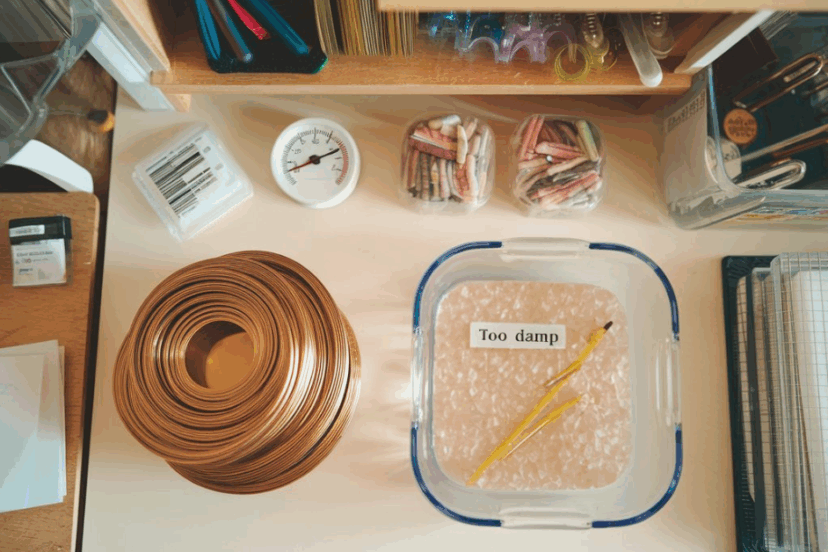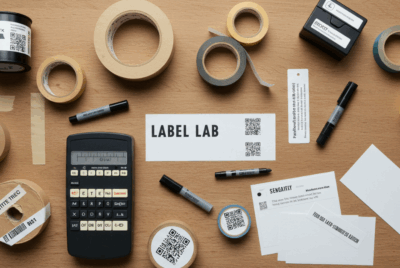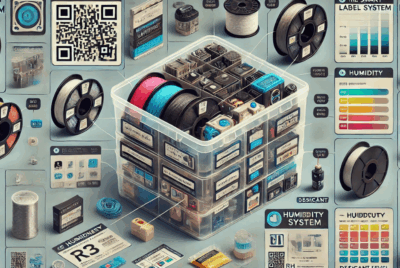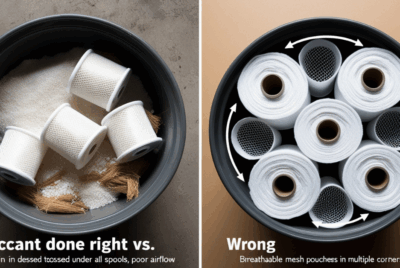How to Recharge or Replace Silica Gel Packs for Filament Storage?
1. Silica Gel—The Unsung Hero of Filament Storage
If you want dry, high-performing filament, silica gel is your best friend.
But here’s the kicker: it doesn’t last forever.
Eventually, it becomes saturated—and when it does, it needs a refresh.
Let’s walk through exactly how to recharge or replace silica gel packs so your filament stays crisp and print-ready.
2. Why You Need Silica Gel in the First Place
Silica gel absorbs moisture from the air.
That makes it ideal for:
- Vacuum-sealed bags
- Airtight filament bins
- Dry boxes and DIY storage setups
Without it, your filament slowly soaks up humidity, and you end up with popping, stringing, or brittle parts.
3. What Happens When Silica Gel Stops Working
Once saturated, silica gel:
- No longer absorbs moisture
- Lets the humidity rise inside your container
- Puts every spool inside at risk
It doesn’t look wet—but trust us, it’s not working anymore.
4. How to Know When It’s Time to Recharge or Replace
🔹 Signs to watch for:
- Color-changing gel turns from orange to green or blue to pink
- Spools start printing worse, even with proper storage
- Hygrometer shows humidity creeping up past 40–50% RH
- Silica gel feels heavy or slightly warm to the touch
If you see any of these, it’s time for a refresh.
5. Color-Changing Silica Gel: The Visual Indicator
Color-indicating silica gel is a game-changer.
| Color | Status |
|---|---|
| Orange / Blue | DRY and ready |
| Green / Pink | WET and needs recharging |
💡 Pro tip: Mix indicator beads with plain ones to stretch your supply.
6. How to Recharge Silica Gel Packs in the Oven
🔧 Oven Method:
- Preheat oven to 250°F (120°C)
- Place silica gel in an oven-safe dish (ceramic or glass)
- Spread evenly to maximize surface area
- Bake for 1.5 to 2 hours
- Let cool, then seal in an airtight container immediately
✅ Works great for larger batches
⚠️ Avoid using aluminum foil—it can trap moisture
7. How to Recharge Silica Gel in the Microwave
Only use this method if your packs are microwave-safe (read the label!).
⚡ Microwave Method:
- Place gel in a microwave-safe bowl
- Heat on medium power for 1–2 minutes at a time
- Stir and repeat in short bursts, checking color after each round
- Don’t exceed 8–10 minutes total
⚠️ Be careful! Some silica beads can spark or burn if overheated.
8. Safety Tips for Recharging
- Never leave the oven or microwave unattended
- Don’t use plastic containers
- Wear oven mitts when handling hot packs
- Let silica gel cool completely before sealing
- Keep pets and kids away—silica gel is NOT food-safe
9. When Should You Replace Instead of Recharge?
Replace your silica gel if:
- It has lost its color-changing ability
- It smells off or feels sticky
- The beads are cracked, leaking, or fused
- You don’t want to bother recharging (some people prefer fresh packs every 3–6 months)
10. Best Silica Gel Types for 3D Filament Storage
| Type | Best Use | Notes |
|---|---|---|
| Color-indicating beads | Easy monitoring | Turns color when saturated |
| Rechargeable packs | Ongoing reuse | Great for dry boxes and bins |
| Loose bulk beads | Custom projects | Fill your own DIY containers |
| Reusable canisters | No mess | Plug-and-play for drawers or bags |
11. Where to Buy Rechargeable Silica Gel Packs
Here are top sources:
- Amazon – Brands like Dry & Dry, Interteck, and Eva-Dry
- McMaster-Carr – Industrial-grade packs and bulk gel
- eBay – Great for bulk color-indicating varieties
- Home Depot / Lowe’s – Small packs in hardware section
- 3D Printing Suppliers – Often bundled with filament storage kits
12. How to Store Silica Gel for Maximum Lifespan
- Keep unused packs in airtight containers
- Store in cool, dry, dark areas
- Avoid handling beads directly with wet hands
- Rotate older packs to the front (like groceries!)
13. DIY Hack: Make Your Own Indicator Packs
Got loose beads and want to customize your storage?
- Use coffee filters, mesh bags, or cotton pouches
- Fill with beads, seal with twist ties or string
- Add a few indicator beads to the mix
- Label the pack with the last recharge date
Cheap, reusable, and scalable for any container!
14. How Much Silica Gel Do You Actually Need?
General rule:
➡️ Use 50–100 grams per standard filament bin or bag (up to 5 gallons)
For very humid climates or big storage boxes, double up.
Always err on the side of more—excess silica won’t hurt.
15. Final Thoughts: Keep It Dry, Keep It Printing
Silica gel is small, simple, and totally crucial to protecting your filament.
But like any good helper, it needs upkeep.
✅ Recharge regularly
✅ Replace when needed
✅ Store it smart
✅ Monitor humidity
With just a little effort, your filament stays dry, your prints stay sharp, and your frustration stays far away.
❓FAQs
- How many times can you recharge silica gel?
Typically 20–30 times before it loses efficiency—color-changing gel may last less. - Can I use rice instead of silica gel?
You can—but it’s far less effective, not reusable, and gets moldy over time. - What temperature should I avoid when drying silica gel?
Never exceed 300°F (150°C) or the gel can crack or burn. - Is silica gel toxic or dangerous?
It’s non-toxic but not edible. Keep away from kids, pets, and food storage. - Can I store filament without silica gel?
Only for short periods, and only in very dry, climate-controlled rooms. For best results, always use desiccants.




